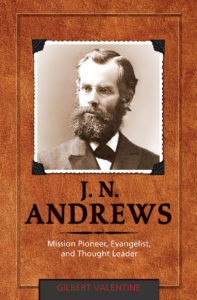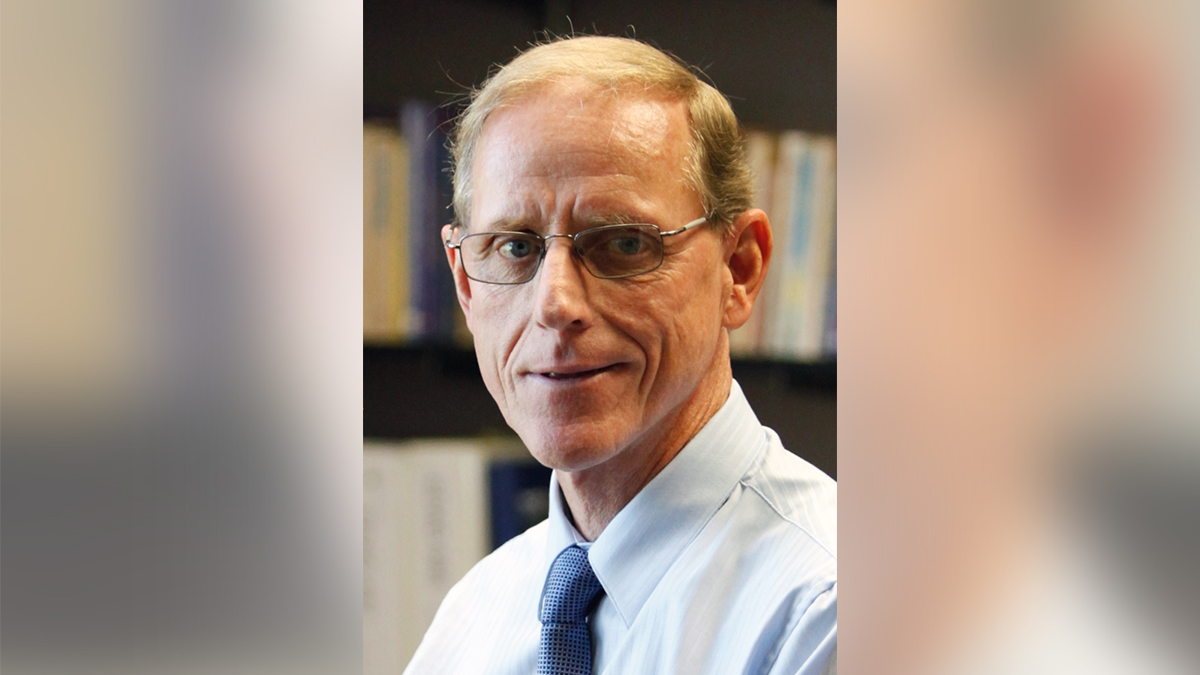Dr Gilbert Valentine has taught and served in administration in Adventist education around the world. Having worked in his native New Zealand, Australia, Pakistan, England and Thailand, he is now based at La Sierra University in Riverside, California. He is also an accomplished writer and Adventist historian, but his new biography of Adventist pioneer J N Andrews is his most ambitious work. He spoke about the current energy among Adventist historians and the origins of his new book.
There seems to be a new energy and openness among Adventist historians. What has brought this about?
In very recent times, a great deal of new material has become available to the Adventist historian. There are newly released letter collections, new diaries from a range of informed observers, and new photographs and lost transcripts of meetings have been recovered. Some letters that were previously considered too revealing or too sensitive for researchers are now available. For Adventist historians, this is like having bright new, high-watt light bulbs available that shine as floodlights in a dim room—the new details and perspectives can be amazing. This energises historians. The colours are more brilliant, the people more full-fleshed. And Adventist publishing houses are now more willing to publish the results of studies that tell the story of our Church in full colour, and that correct and sometimes challenge traditional but sometimes incomplete understandings of the past.
What does this new engagement with our history offer the Church today?
New sources help us fill in gaps, correct misinterpretations, open broader perspectives on the complexity of developments, and reveal our forebears in new ways. As George Knight points out in his new book, Ellen White’s Afterlife (Pacific Press, 2019), many seriously damaging inaccurate ideas grew up around Ellen White’s story in the decades after she died. New studies and new sources help correct these myths and misunderstandings about her and about the development of the Church. We see the struggles behind the scenes and hear the debates over important issues. In short, we are able to have a much clearer sense of who we are and how we got here. The Church finds that it does not need to be so defensive about its past. Revisionist history—in the best sense of the phrase—really does help us see the story of our past in more adequate ways. The Church as a community of faith is enriched by an even deeper sense of gratitude and awe as it ponders anew how providence works.
What caught your interest in J N Andrews?
In this new study, there are many insights that intrigue me about the complexity of this Church leader. I am impressed by the depth of his struggles to establish the mission in Europe as a novice missionary and how culture shock made his task more difficult. I was intrigued to learn that, as an ordained minister, he chose to be rebaptised even as he retained his credentials. I am struck by the fact that James White at times felt quite threatened by Andrews as a fellow leader. I found it illuminating to sense how keenly Andrews experienced the imminence of the Advent, how that sharply focused his sense of duty in everything he did, but also generated an abiding sense of guilt that he had never done enough.
How long did you work on this 700-and-then-some-page book? And how did you go about working on such a large research and writing project?
I first began to work on the Andrews biography in 2010. It has been a long haul. But I resonate with the advice of the Pulitzer prize-winning author and biographer of Lyndon B Johnson, Robert Caro, who explained that his strategy was to “turn every page.” Don’t skim and don’t skip. The documentation now available about Andrews is enormous, but I have done my best to search every page. And I think it has paid off. There are gems of insight and understanding under every sentence in the sources.

What was your most surprising discovery?
Perhaps the most illuminating new insights from the study were those about Ellen and James White as Andrews’ close colleagues. To see James White struggling with what I suggest seems to have been a bi-polar mood disorder is enlightening. New understandings of the depths of Ellen White’s struggle and her times of depression as her husband became increasingly dysfunctional as a result of his repeated strokes, for me, created a new appreciation for her grit and determination.
Is this possibly the most unvarnished portrayal of James and Ellen White that has been published by an Adventist press?
There have been other volumes that have tried to portray the Whites in a realistic way. But Andrews lived and worked with them so closely that it is unavoidable. Thus we see wrinkles and splotches in their temperaments and personalities and in their actions sometimes. I don’t see this as unflattering or flattering, but rather a picture of people as the sources reveal them. This more complete understanding is possible because of the abundance of new sources now available—including letters we had not been able to see previously, which can be linked to personal diaries. When you read sources like these more closely and carefully, the picture becomes more complete and, in a publishing climate where one can be more frank, the outcome is a much richer understanding.
I think is the first volume that tries to understand the key characters in the light of this new material released in 2015. Flattering or unflattering, these are people who with their enormous gifts and abilities and with their quirks and frailties, contributed in truly remarkable ways to the birth and development of our Church. Looking back from a perspective of faith, the believer sees how the Whites responded to what they heard as the call of God and how God used them despite their flaws.
Andrews seemed to live and work most of his life in the shadow of the Whites. Is there a risk that he might similarly be overshadowed by them in this biography?
There may be a risk, but I hope the picture of Andrews is clear nevertheless. These three pioneers were a very close team. Their lives were entwined together in the cause for many years. From the time he was 20, every major turning point and development in Andrews’ life was shaped in some way by his relationship to Ellen and James, and his personal welfare was often linked to theirs. It is also true that Andrews’ relationship with James White was very difficult at times, complicated by White’s autocratic temperament and by Ellen White’s need to defend her husband in the larger interests of the cause. Andrews’ story cannot be understood without also telling the story of James and Ellen, albeit from a new angle.
Although this happened at times, I hope that John Andrews will not be perceived by the reader as being completely overshadowed by his two colleagues. Andrews was a remarkably gifted writer and preacher, leader and scholar in his own right. I hope this study clearly reveals him as an individual who was inevitably part of the team, but who stands out as his own person with his own distinctive gifts and personality.
As an historian do you have to treat Ellen White’s counsels as having special status?
Yes, because of what they claim to be. But they still need to be analysed historically. Part of the problem in past studies of Andrews is that the many personal “testimonies” from Ellen White addressed to John Andrews have been the primary filter to understand him. They do provide helpful insights into his life and philosophy, but the researcher needs to be careful about allowing these documents to be the dominant interpretive lens without a careful understanding of the “time and place” of both the author and the recipient. Careful study also needs to be given to Andrews’ own responses to the many counsels and criticisms. The correspondence also needs to be sensitively interpreted in the context of the distinctive temperamental mood swings of Ellen White’s husband, his autocratic leadership style and the conflicted attitudes that he developed towards Andrews even though he was James’ closest loyal associate. It was a relationship characterised by misunderstandings, offenses taken—even if not intended—and of offenses given and intended. Submission was often the only option for associates like Andrews. But what is also now clear in the correspondence is that, at times, Ellen White feared that her husband’s unreasonable, harsh criticism of Andrews (and two or three other colleagues) had irreparably intimidated them, destroying their self-confidence and their ability to think and act for themselves.
Andrews is commonly lauded as the first Adventist (foreign) missionary, but it seems his hard work and best efforts met with little success and he died in Switzerland with a sense of failure. Why were we seemingly so bad at mission?
A close study of John Andrews as our first official missionary really pays dividends in thinking about this problem. Our pioneers really were novices when it came to their initial entry into overseas mission. Church leaders in the 1870s believed that they could simply take what they called “the American Model” of evangelism, put it to work in Europe and it would be successful. Furthermore, it was assumed that the missionary would not need a salary from home base; one would quickly be able to earn a salary from those whom one could convert. So Andrews went to Europe as an expatriate without a regular salary and he learned quickly that things weren’t quite as simple as in the US. [pullquote]
In the 1870s, the Church had little or no appreciation of the impact of culture shock, of the skills of cross-cultural communication or of the difficulties that an older expatriate might have in learning a foreign language. American-style evangelism and Adventism’s revivalist testimony-focused worship ethos did not work easily in the European context. But the development of a magazine to overcome the local barriers to evangelism did work well, though it took time to adjust to the new culture and to learn how to cope with the vagaries of local postal regulatory inhibitors. This study of Andrews throws a great deal of new light on how Andrews helped the Church learn how to do mission as he himself learned. The Church is indebted to him. He really was a pathfinder.
What do you consider Andrews’ most significant contribution to Adventism as we know it today?
Andrews’ pioneering work on the history of the Sabbath was an outstanding contribution. It is somewhat dated today and, through the work of more contemporary Adventist scholars, we have learned much more about the complexities involved in the change from Sabbath to Sunday. But Andrews was the pioneer above all who taught us about the value of footnotes and careful historical research in the pursuit of and defense of truth.
What are your favourite other titles in the “Adventist Pioneer Series”?
I’m probably biased but I think my biography of W W Prescott still places near the top of the “Adventist Pioneer Series”. Ben McArthur’s study of A G Daniells is a great story and a refreshingly frank study. Doug Morgan’s study of the African-American preacher Lewis Sheafe, I think, is brilliant for the new light it sheds on the tortured story of race relations in the Church. I am really looking forward to Denis Fortin’s forthcoming study of George Butler. Butler is a really colourful figure and there is much new to learn about him. There is important information to learn from the whole series.
Why do the stories of our early Adventist pioneers matter for us?
History is not only events and dates, wars and discoveries. It is about people. History is made by people. Biographies can tell us more about our history, who we were and who we are now, than anything else can. As the famous Anglican Dean, F W Farr once said, anyone who is familiar with the lives of the chief Church fathers “will scarcely be ignorant of any event of capital importance which occurred during the epoch in which they lived”.
J. N. Andrews: Mission Pioneer, Evangelist, and Thought Leader by Gilbert M Valentine (Pacific Press Publishing Association, 2018, 728 pages) is available from Adventist bookstores in Australia and New Zealand or https://adventistbookcentre.com.au/j-n-andrews.html.






